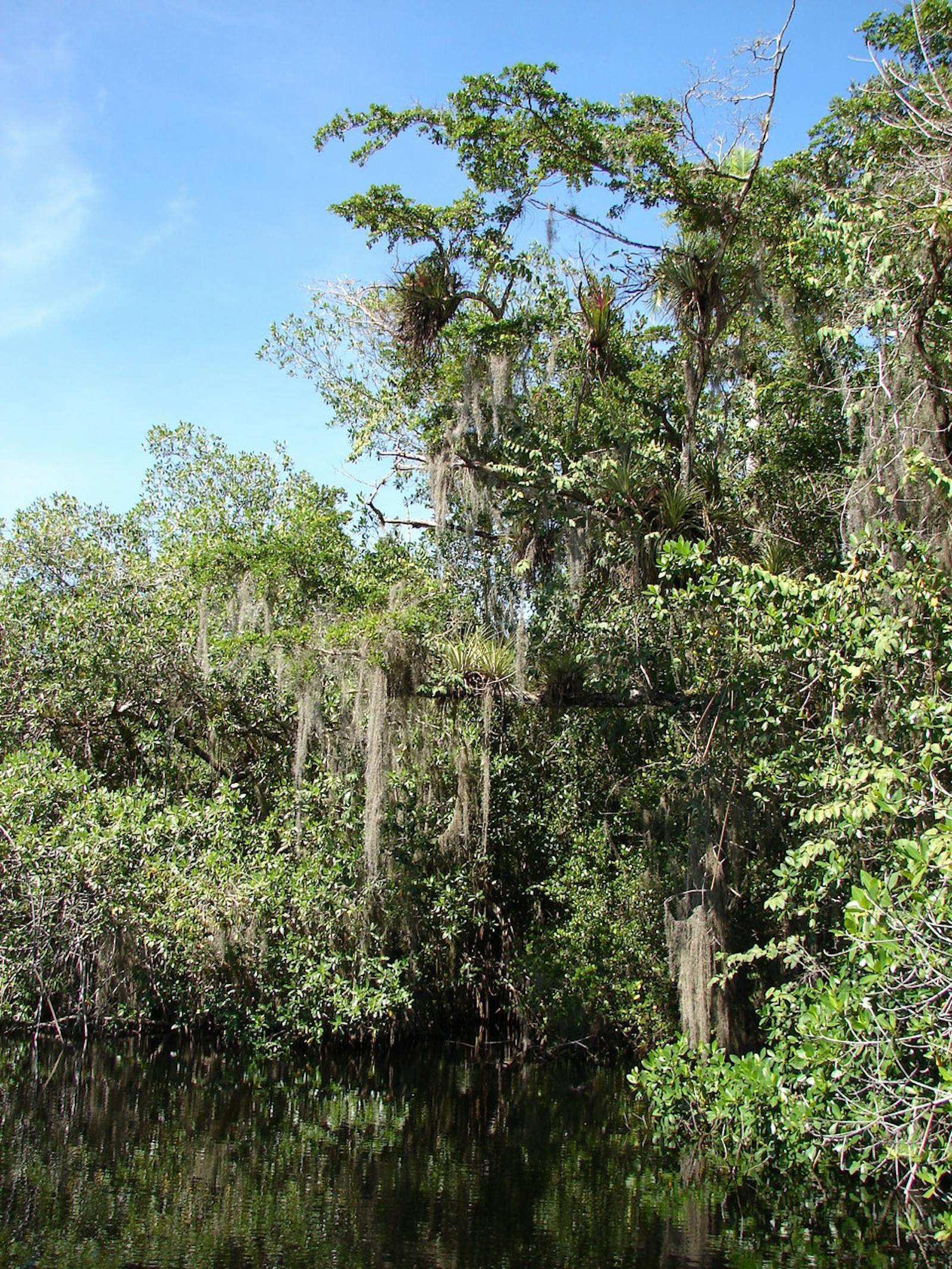Cuban Wetlands
The ecoregion’s land area is provided in units of 1,000 hectares. The protection goal is the Global Safety Net (GSN1) area for the given ecoregion. The protection level indicates the percentage of the GSN goal that is currently protected on a scale of 0-10.
Bioregion: Caribbean Islands (NT26)
Realm: Central America
Ecoregion Size (1000 ha):
567
Ecoregion ID:
579
Conservation Target:
65%
Protection Level:
10
States: Cuba
The endemic and critically endangered Cuban crocodile is found in the freshwater marshes in the Cuban wetland ecoregion. This relatively small crocodile is unique in being endemic to a confined wetland on an island in the middle of the Caribbean—which means that there is nowhere else to go when their habitat is loss. The Cuban crocodile is unique with its “long and strong” legs which also make it the most adapted species for walking and surviving outside of water.
This is likely an evolutionary adaptation to follow surface water patterns in these relatively shallow and dispersed swamps. In addition to habitat loss, they are threatened by illicit hunting and hybridization with native American crocodiles; less than 5,000 of them are left on the island.
.jpg)
The flagship species of the Cuban Wetlands ecoregion is the Cuban crocodile. Image credit: Creative Commons
Most of Cuba’s wetlands are located on floodplains and depressions influenced by the tides. This includes the Zapata Swamp, the largest wetland in Cuba and the Caribbean, and the best preserved to date in the Antilles, although it is currently subject to numerous threats. The Zapata Swamp lies in the southern Matanzas province. With an area of 450 km2 and a length of 175 km from Punta Gorda to Jagua, it is divided into the Western Swamp and the Eastern Swamp.
There is a wide range of vegetation types, largely dependent on varying water levels/ influence. Swamp grassland in marshy or swampy areas periodically or permanently submerged under water include characteristic vegetation such as southern cattail, sawgrass, sugarcane plumegrass, and bent alligator flag. Aquatic vegetation formed by grasses that live in the water include common water hyacinth, water cabbage, and fragrant water lily among others. Zapata Swamp and Lanier Swamp have developed mangrove vegetation. The typical swamp forest reaches 8–20 m tall and includes elements of dry and evergreen forest.
The wetlands of Cuba represent about 4% of the island’s territory and include habitats with unique and ideal vegetation for fauna. There are about 900 plants and some 212 species of vertebrates. There are five local endemic plant species. The Zapata Peninsula and the Birama Swamp are areas rich in endemic bird species: of the 20 endemic species existing in Cuba, 17 have been reported on the peninsula.
Zapata is one of the most important refuges for 65 species of migratory birds, and is home to about half of the 346 known species of birds in the country. The more forested areas of the ecoregion harbor island endemic birds like the Cuban parakeet, blue headed quail dove, Cuban amazon, Fernandina’s flicker, and the Cuban grassquit. Mammals of interest include the fishermen bat—one of the largest in the Americas—manatee, and the endemic dwarf hutia of Zapata, although likely extinct.
This ecoregion’s conservation status is at risk and it is biologically distinctive at the regional level, making it a top regional priority. Cuba has designated the Zapata Peninsula National Park, Zapata Swamp Natural Reserve, the La Laguna del Tesoro-Playa Larga-Playa Girón Natural Tourism Area, and the Delta del Cauto Wildlife Refuge within this ecoregion.
The most severe threats for the region are drainage, agricultural expansion, charcoal production, grazing, extraction of peat, and the invasion of exotic species. Considerable amounts of pesticides are sprayed by plane into the area as a common practice for rice crops, which is a key staple. Intense deforestation in the Sierra Maestra has caused the Cauto River, Cuba’s largest river, to become nothing more than a stream in the dry season, affecting its flow into swamps.
A large number of fishing cooperatives operate in the Birama swamp. The unregulated capturing of crocodiles (Crocodylus acutus), jicoteas (Pseudemys decussata), and endemic fish like the biajaca (Cichlasoma tethracantha) decimates the populations and is unsustainable in the long term. Estimates show that by 2030 rising sea levels from climate change will result in 70% of the coastline being floodable, which will alter the wetland ecoregion dynamics.
The priority conservation actions for the next decade are to: 1) restrict cutting for charcoal and timber in key areas; 2) enforce stricter provisions and security against illicit hunting, especially in the Birama region; and 3) enact a long term management plan for the Cuban wetland areas to promote sustainable use and restoration of ecosystem services.
Citations
1. D’Ambrosio, U. 2018. Cuba https://www.worldwildlife.org/ecoregions/nt0902 Accessed August 27, 2018.
2. Dinerstein, E., D. M. Olson, D. L. Graham, A. L. Webster, S. A. Primm, M. P. Bookbinder, and G. Ledec. 1995. A conservation assessment of the terrestrial ecoregions of Latin America and the Caribbean. DC.: WWF and The World Bank.
3. Wotzkow, C. 1998. Cuba: SOS por su naturaleza. Encuentro de la Cultura Cubana 8/9: 16-23.
4. Targarona, R.R., Soberón, R.R., Cotayo, L. & Tabet, M.A. and Thorbjarnarson, J. (IUCN Crocodile Specialist Group). 2008. Crocodylus rhombifer (errata version published in 2017). The IUCN Red List of Threatened Species 2008: e.T5670A112902585. Accessed August 27, 2018



